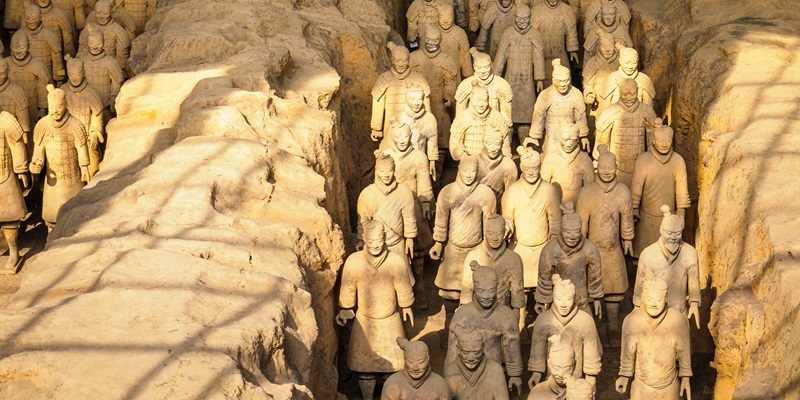Cultural heritage preservation plays a critical role in safeguarding our rich history, ensuring that future generations can learn from and appreciate the achievements and wisdom of previous cultures. With the advent of artificial intelligence (AI) and machine learning (ML), we now have innovative tools that offer unprecedented possibilities in preserving and protecting our cultural heritage. This article examines the multifaceted role of AI and ML in cultural heritage preservation, exploring their applications in authenticity assessment, artifact restoration, digitization of historical sites, promoting ethical use, accessibility, affordability, and revolutionizing identification and conservation efforts.
The Multifaceted Role of AI and ML in Cultural Heritage Preservation
The impact of AI and ML in cultural heritage preservation extends beyond what was previously imaginable. These technologies enable us to analyze, interpret, and protect our cultural heritage in ways that were once time-consuming, costly, or even unattainable.
Authenticity Assessment Using AI Algorithms
One crucial aspect of cultural heritage preservation is the identification of genuine artifacts. AI algorithms prove invaluable in assessing an artifact’s authenticity by analyzing various characteristics. With machine learning, algorithms can compare the physical attributes, craftsmanship, and historical context of an artifact to determine its legitimacy. This allows experts to identify counterfeit or forged artifacts, ensuring that only genuine pieces are preserved and displayed.
Restoration of artifacts with the help of AI algorithms
Over time, artworks and artifacts may deteriorate due to environmental factors or human intervention. AI algorithms come to the rescue by detecting and correcting imperfections in paintings, sculptures, and other works of art. With their ability to analyze images, AI algorithms can restore artifacts to their original glory, preserving their beauty and artistic integrity. This technology assists conservators in their restoration efforts, providing them with powerful tools to revive and preserve cultural treasures.
Digitization and Preservation of Historical Sites Using AI and Drones
Preserving historical sites is equally crucial for cultural heritage conservation. AI algorithms, combined with drones, revolutionize the digitization process by capturing high-resolution images and creating 3D models of these sites. This digitization not only allows for their preservation but also enables remote exploration and study. Scholars and enthusiasts can virtually visit and analyze historical sites, even those that are physically inaccessible or at risk of destruction. By digitizing these sites, we can ensure their survival and accessibility for future generations.
Importance of Ethical Use of AI and ML in Cultural Heritage Preservation
While AI and ML offer tremendous opportunities, the ethical use of these technologies is paramount in cultural heritage preservation. It is essential to acknowledge that human expertise and knowledge are irreplaceable in aligning preservation efforts with historical and cultural significance. AI algorithms should supplement expert analysis rather than replace it, ensuring that decisions regarding preservation, restoration, and interpretation align with ethical and cultural considerations.
Promoting the Accessibility and Affordability of AI and ML Technologies in Preservation Efforts
To achieve comprehensive cultural heritage preservation, it is vital to promote the accessibility and affordability of AI and ML technologies. Efforts should be made to make these tools available to smaller organizations and communities, enabling them to participate in preserving their cultural heritage. By reducing barriers to access, we can foster greater inclusivity and broaden the impact of cultural heritage preservation efforts.
Revolutionizing the identification, restoration, and conservation of artifacts through AI and ML
The integration of AI and ML technologies is revolutionizing the way we identify, restore, and conserve artifacts. These technologies can analyze large databases, identifying patterns and connections that would be challenging for humans alone. By automating certain tasks and augmenting human capabilities, AI and ML empower conservation efforts to be more efficient and effective, ensuring the long-term preservation of cultural artifacts.
Ensuring the preservation of beauty for future generations with AI-assisted restoration
One of the key benefits of AI in cultural heritage preservation is its ability to assist in restoring and preserving the beauty of artifacts for future generations. AI algorithms can analyze and repair damage, recreating the original aesthetics of an artifact. This AI-assisted restoration ensures that the beauty and significance of cultural artifacts are preserved and appreciated by generations to come.
Safeguarding Cultural Heritage through AI-Powered Identification of Counterfeit Artifacts
Counterfeit and forged artifacts pose a significant threat to cultural heritage preservation. AI technology plays a crucial role in addressing this challenge by helping experts in the field identify counterfeit or forged artifacts with greater accuracy and speed. By ensuring that only genuine pieces are preserved and displayed, we safeguard our cultural heritage from misrepresentation and loss.
The integration of AI and ML in cultural heritage preservation provides us with unprecedented tools and opportunities to protect and preserve our cultural heritage for future generations. From authenticity assessment to artifact restoration, digitization, and ethical considerations, AI and ML are revolutionizing conservation efforts. As we embrace these technologies, it is crucial to ensure their ethical use, promote accessibility, and support the participation of diverse communities in preserving their cultural heritage. With these advancements, we can safeguard our history, learn from our past, and inspire future generations through the preservation of our rich and diverse cultural legacy.

